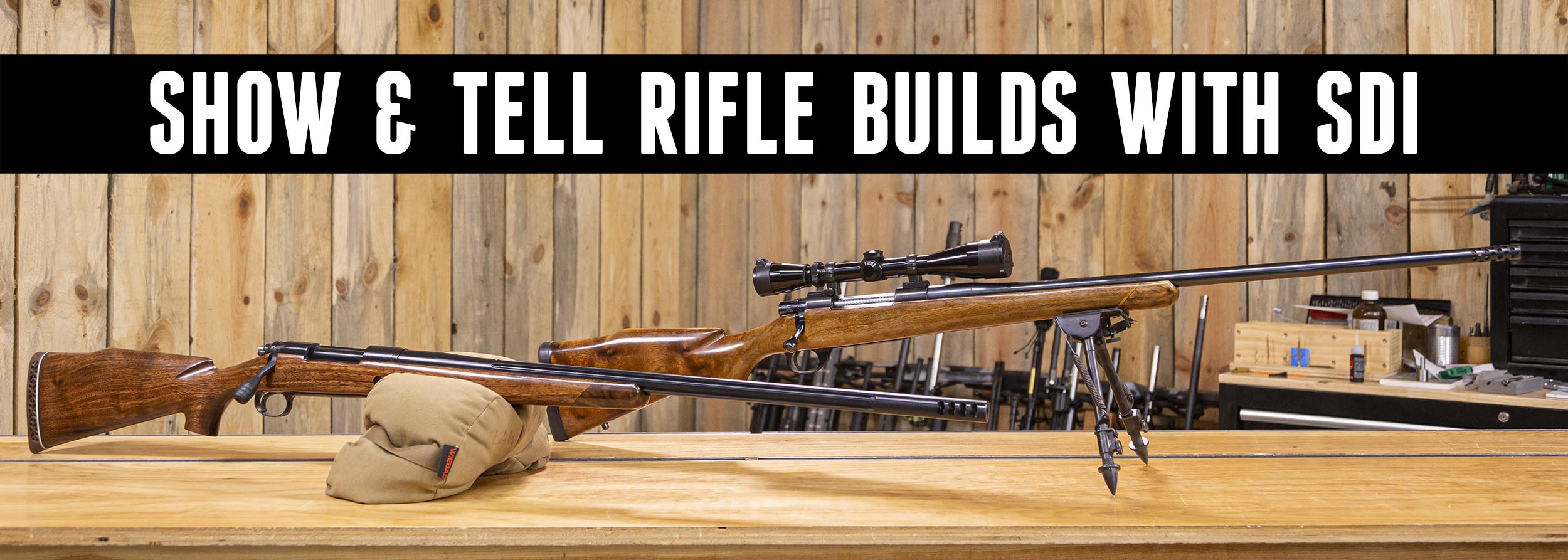We’ve shown how online gunsmithing works, what SDI is, and their programs. This time we discuss actual rifle builds with Rick Casner from the Sonoran Desert Institute.
Disclaimer
Ultimate Reloader LLC / Making with Metal Disclaimer: (by reading this article and/or watching video content you accept these terms). The content on this website (including videos, articles, ammunition reloading data, technical articles, gunsmithing and other information) is for demonstration purposes only. Do not attempt any of the processes or procedures shown or described on this website. All gunsmithing procedures should be carried out by a qualified and licensed gunsmith at their own risk. Do not attempt to repair or modify any firearms based on information on this website. Ultimate Reloader, LLC and Making With Metal can not be held liable for property or personal damage due to viewers/readers of this website performing activities, procedures, techniques, or practices described in whole or part on this website. By accepting these terms, you agree that you alone are solely responsible for your own safety and property as it pertains to activities, procedures, techniques, or practices described in whole or part on this website.
About SDI
From sdi.edu:

Sonoran Desert Institute is a DEAC accredited, online school that helps students learn the skills and techniques they’ll need to be successful in the firearms and unmanned technology industries. SDI’s faculty is comprised of professionals with decades of industry experience, and our programs are designed to combine modern learning methods, hands-on training options, and the flexibility of online education.
Sonoran Desert Institute was founded in 2000, and was approved for training by the Arizona State Board for Private Postsecondary Education in 2001. The Institute was accredited in 2004 by the Distance Education Accrediting Commission (DEAC). The DEAC is listed by the United States Department of Education as a recognized institutional accrediting agency for distance education. The DEAC is also recognized by the Council for Higher Education Accreditation (CHEA).
At its inception, the Institute offered Gunsmithing as a program, which ultimately became the foundation for SDI’s growth. Key to the success of the Institute is its comprehensive approach to easily understood curriculum, attention to providing quality service to its students, and the flexibility of its instructional model.
In 2012, Sonoran Desert Institute was acquired by the Trade Training Company, LLC. This transfer was approved by DEAC and the Arizona State Board for Private Postsecondary Education. In 2014, SDI introduced armorer courses as part of its programs.
Also in 2014, SDI applied to DEAC for Title IV Certification. In 2015, after receiving approval from DEAC, the institute submitted its application to the U.S. Department of Education (ED) to offer Pell Grants and Direct Loans to students in the Associate of Science in Firearms Technology. This change was primarily prompted by the Department of Defense’s regulatory change linking eligibility for Active Duty Tuition Assistance to schools approved for Title IV funding. Recognizing the high percentage of military students in our student population, SDI deemed this as an important initiative. SDI began offering Title IV funding to students in January 2016. In January 2018, after receiving approval from Department of Education, SDI also began offering Title IV funding to students in the certificate program.
In June 2018, SDI was granted a 5-year renewal of accreditation and in fall of 2018, SDI transitioned to become an employee owned company (ESOP). SDI takes pride in upholding the standards of multiple regulatory bodies while continuing a student-centric focus on academic quality and superior service to students!
In January 2022, SDI introduced the School of Unmanned Technology and began to offer the Certificate in Unmanned Technology – Aerial Systems program.
CMMG 6mm ARC AR-15
Every gun has a story. If you build it yourself, you know its true beginnings. When I first started taking an interest in chambering my own rifles, I reached out to Gordy Gritters. He offered to mentor me, and now we’re starting our own venture together—G4 Productions (Gavin Gear – Gordy Gritters). As part of this, we filmed a full program talking about extreme AR accurizing. This is an especially interesting topic as there are many, many people who work on or build AR’s, but very few who take it to benchrest-level accuracy.
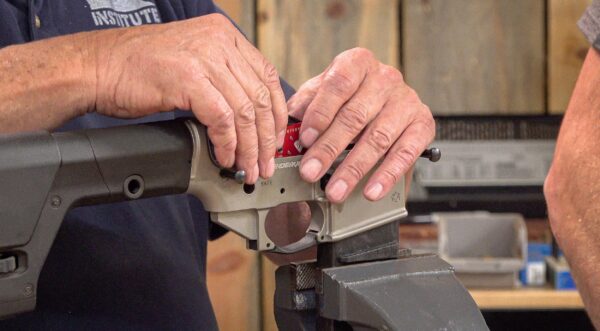
For this build, we slugged then checked the barrel on a CMMG Endeavor. During this process, we discovered we needed some lapping and did so. We also fit the barrel extension to the receiver, trued the receiver, recut the crown, fit the upper to the receiver and the upper to the lower. To do this, we relocated the holes on the milling machine and made custom bushings we could rotate. We also upgraded the trigger. With factory Hornady match ammunition, our efforts took this from a ⅞ MOA gun to a ⅜ MOA gun (with our limited testing).
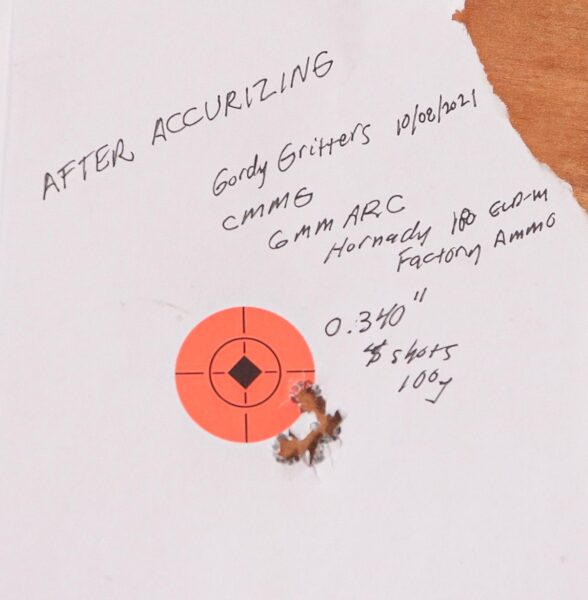
While this is incredibly impressive, what I loved most about this build was the ability to work with Gordy Gritters. (Look for the video soon on Teachable!) If you too want to work with Gordy, check out his AR accurizing class at the Extreme Accuracy Institute.
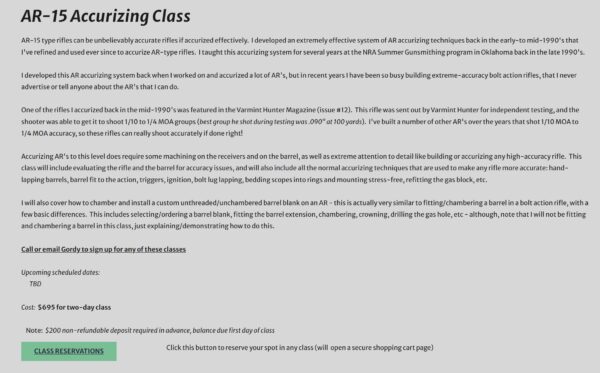
Eddie Van Halen Tribute Rifle
If you’re a Van Halen fan, you’ll recognize the paint job. The goal of this project was to build a rifle that would be a testbed for extreme accuracy testing on a variety of cartridges and accessories. I have a BAT Model B action with a Krieger barrel I chambered myself, topped off with a Sightron SV scope. Most of the work on this rifle I did on the Wheeler Engineering LRB stock. I chose this stock because of its four inch forend and steerable rudder.
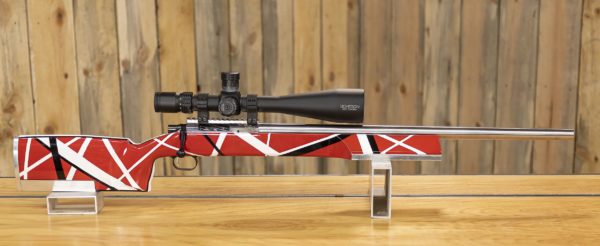
When I built this rifle, I thought the most popular video in the series would be the paint job. It was actually the stock work! I essentially took a block of fiberglass and with some calculations and advice from Alex Wheeler, added a barrel channel, action inletting, and bedded it all from photos. I didn’t have a stock like this to reference. When I went to do the bedding with devcon (recommended by BAT Machine), I realized I had run out of materials. When I went to mix more, I realized my scale had died. This was a stressful situation, but in the end, it all worked out perfectly.
For the paint job, I returned back to my auto paint roots. I used a primer, wet-sanded it, used guide coat to get everything nice and flat and a sealer.
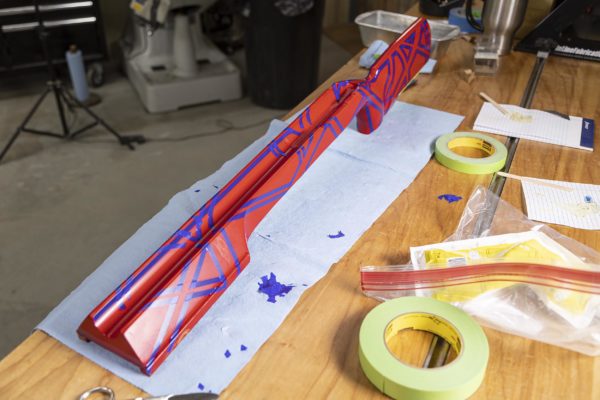
While I was happy with this rifle, there is something I would do differently. I accidentally did the striping on the stock in the wrong order. When Eddie Van Halen did it, he laid strips of tape in patterns, painted them, and put more on. I did it almost in reverse, making it harder than it needed to be. I also noticed after the build was complete that the cocking piece chipped away the paint because I didn’t clearance for it…
HOWA 1500 .30-06 Bolt Gun
Rick also brought along some rifles. This Howa 1500 with a Shilen barrel was the first rifle he ever built. He put it together in gunsmithing school, but has since made some changes to it, including adding a muzzle brake.
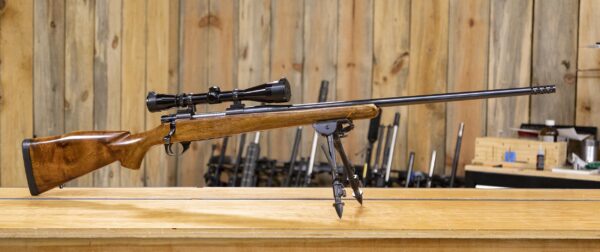
He spent some time talking about the wooden stock. Wood moves with moisture, so you have to try to mitigate that and its effect on accuracy. Rick pointed out that you always do the inletting and bedding before any other stock work. He put some plumbers tape around the barrel before inletting to preserve clearance (free-floated forend), but also epoxied a carbon fiber arrow shaft inside to help decrease twist and torquing. Sealing the wood is another important part of this. Rick did the bedding with regular acraglas gel, but prefers acraglass with fiberglass flocking because it’s easier to work with. After several years of use, Rick noticed some cracking behind the action as the stock dried out. To amend this, he drilled a hole and placed and epoxied a rod into the wrist to strengthen it and stop the crack.
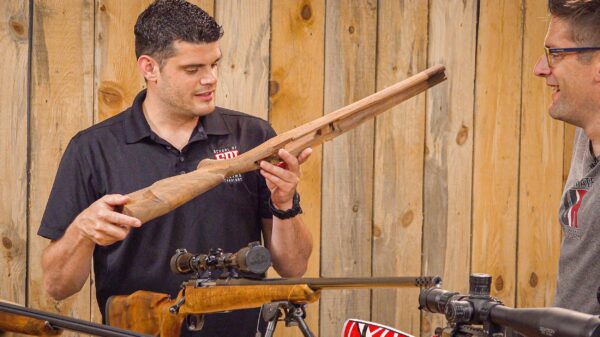
Rick also did some shaping work on the stock, starting with a duplicated stock that needed inletting and a lot of work. He finished it off with a hand-rubbed velvet oil finish. Using an oil finish allows you to buff out any rough spots over time with steel wool and reapply an oil.
Looking back on this first build, Rick woefully recalls the cracked wrist and the crudeness of his first bedding job. There is a lot of work that goes into bedding and it’s a skill that’s developed over time. Prep work is key!
.300 Win Mag Bolt Gun
This gun-show purchase is currently a work in progress.
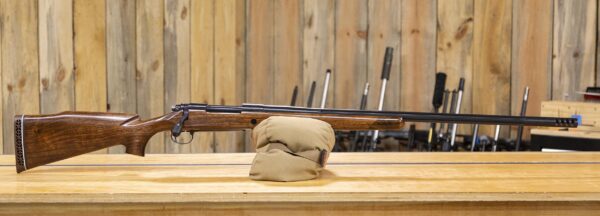
Rick was drawn to the Remington 700 C-series action, but it had a .30-06 barrel installed. He removed that, added a thicker recoil lug and added a heavy Schneider barrel.
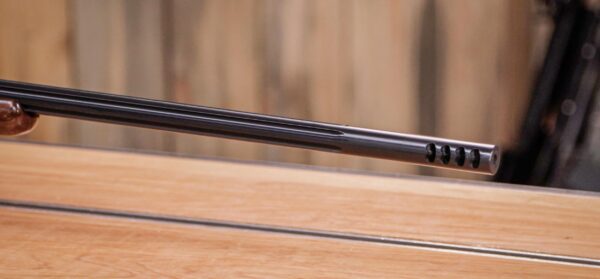
A friend made the muzzle brake. The bolt took the most work.
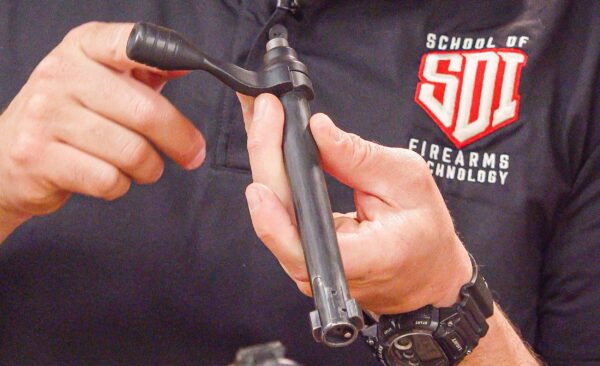
Rick cut off the old bolt handle, turned down and threaded a shank on the bolt handle and made his own bolt knob on the lathe. He then opened up the bolt head and added a Sako-style extractor.
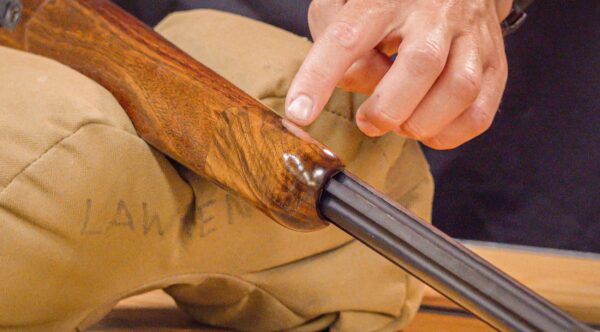
One “mistake” on this build was adding a forend tip of different Walnut than the rest of the stock without a spacer inbetween. Learning from his .30-06 experience, Rick did have the foresight to add a rod into the .300 Win Mag stock for stability to prevent wrist cracking.
Conclusion
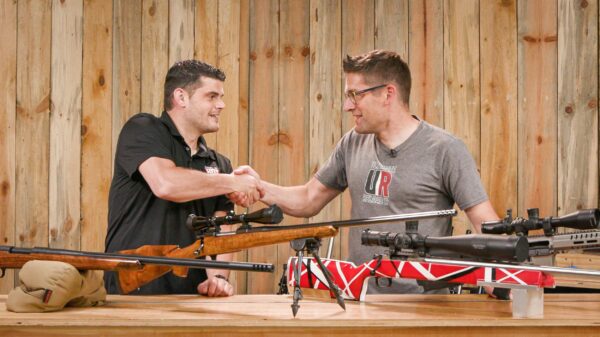
While all these rifles have different platforms, learning how to accurize one greatly supplements your ability to blueprint and accurize another. For example, Rick pointed out that both my AR and bolt gun builds have free-floated barrels and lugs that need lapped.
When building rifles, it’s important to remember that mistakes are an opportunity for learning and growth, particularly at the beginning of your gunsmithing journey.
Contact SDI online: http://sdi.edu
Or by phone: 480-999-4767
Tell them Ultimate Reloader sent you!
Don’t miss out on Ultimate Reloader updates, make sure you’re subscribed!
Thanks,
Gavin Gear
